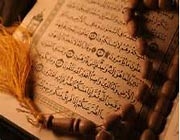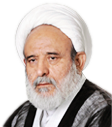
As we approach the 86th anniversary of the tragic occasion of the demolition of the holy graves of Baqi in Medina (which took place on the 8th of Shawwal in the year 1345 AH), we are greatly saddened at the injustice. That holy piece of land is the burial place of great personalities without whom the history of Islam is incomplete. It is the burial place of four of our great infallible Imams: Imam Hasan al-Mujtaba, Imam Ali Zainul Abideen, Imam Muhammad al-Baqir, and Imam Jafar as-Sadiq (peace be upon them all). Unfortunately, the destruction of sacred sites in Hijaz by the Saudi government continues today, and that aggression has extended its evil even to the tombs in Mecca where some of the Prophet’s family members are buried.
It is important for us as Muslims to stress the importance of preserving the signs and holy symbols of God. The concept of preserving the signs and Sha'a-ir of Allah is logical, and any intellectual mind would agree that if you love, respect, and sanctify someone or something, then it is natural for you to also show similar respect and veneration to anyone or any symbol that is associated with the loved one. If you are a teacher who is very devoted to your work and you love the process of educating and gaining knowledge, then it is natural for you to respect the book, the chalkboard, the pen, and anything associated with literature and knowledge. Likewise, the idea of protecting and preserving the signs of God is supported by logic and also by Islam. The Holy Qur'an supports this concept in several verses, such as: "Whoever respects the signs of Allah, it surely is from devotion of the hearts" (22:32) and when He says, "O you who believe! Violate not the sanctity of the symbols of Allah..." (5:2).
It is important to gain an understanding of the definition of "Sha'a-ir". Sha'a-ir of Allah refers to every sign which gives us knowledge about the essence of God, as well as reminds us of Him and His bounties, mercy, wrath, and His other attributes. Allah gives us many examples of His signs in the Qur'an, some of which are explicit and others which are not. The “signs” of God can be places, events, personalities, catastrophes, and many other things. Among the signs which have been given a special status is the staff of Prophet Musa (peace be upon him) which Allah selected to be the one of the means by which he defeated the Pharaoh. This staff may seem simple in appearance, but it has been given great divine importance and some sources say that it will be among the special items that our Twelfth Imam (may Allah hasten his reappearance) will return with. Also, the shirt of Prophet Yusuf (peace be upon him) has been mentioned several times in the Qur’an and it brought about the miraculous cure of his father’s blindness. Prophet Saleh (peace be upon him) was designated by Allah as His representative to the people of Thamood, and he was accompanied by his camel. But the people of Thamood violated the sign of God that was in their presence, and they killed the camel and its siblings without mercy. What was the divine response to their heinous crime of disrespecting His sign? Swift destruction after three days!
Each of these signs may be materialistic in nature, but they represent something divine and very sacred: His sign is a reminder of His mercy and endless bounties. One of the greatest examples of His Sha'a-ir is the Holy Qur'an which must be respected and venerated at all times. Situated in Mecca, the Ka'ba represents the Holy House of God, and unfortunately even this holy symbol has been desecrated by the Saudi dynasty by building extravagantly luxurious buildings in its periphery! History shows us that as soon as a man called Abraha attempted to destroy the Ka'ba, the punishment of God upon him and his army was swift and fatal. Here, the Almighty directly intervened to save His House and teach a lesson for all of mankind to learn from, and He revealed a whole chapter in the Qur'an narrating this incident. In today’s world, even when some of the envious and hypocrite Muslims repeatedly attempted to remove or cover up the crack on the Yemeni Corner of the Ka'ba which resulted from its opening to accommodate the birth of Ali ibn Abi Talib (peace be upon him), divine intervention took place time and again to protect this great symbol.
The Ka'ba itself holds the special heavenly Black Stone, which all Muslims sanctify – not for its physical nature, but for what and whom it represents. When Muslims perform the circumambulation and embrace the Black Stone, they renew their covenant with Allah which is the essence of the belief that He is One. In their ignorance, some people attribute the veneration of these symbols as "Shirk" and condemn these actions. Yet, when we respect material symbols such as the footsteps of Prophet Ibrahim (peace be upon him) then we are not worshiping a stone or a place; rather, we are cherishing the memory of Prophet Ibrahim whom we love. We love Prophet Ibrahim for his love for Allah and because Allah loves him. Therefore, when we trace this line of “love”, we find that it originates from and ends at the Almighty Creator! In answer to the accusations of Shirk by those who reject these signs and symbols and violate its sanctity through aggression, Allah says, “But none reject Our signs except only a perfidious ungrateful wretch!” (31:32)
The best examples of the symbols of Allah are the representatives He sent to us: the prophets and divine guides. Even though we did not live at the time of the great personalities of our Prophets and Imams, we have been blessed with their relics and their traces, and that is why things and places associated with them become so important. Islam encourages us to strengthen our love and belief through symbols which remind us of them and, subsequently, of the divine path and struggle of these blessed people. That is why Muslims revere the water of Zamzam, the city of the Prophet, the cave of Hira and the dust of Karbala. These signs help form our symbolic and material bonds to the pure remembrance of these divine personalities. On the other hand, we also condemn and express disdain to signs and symbols that represent personalities or events who are the enemies of God. For instance, during Hajj we stone the Devil’s pillars not because the pillars themselves are evil, but because it is a symbol which represents the devil; thus, stoning it would be an expression of disapproval to the Devil.
When we discuss the issue of respecting holy sites and places, it is interesting to note that when Prophet Musa went to the sacred land of Mount Sinai, Allah ordered him to take off his shoes – not only out of respect at meeting his Lord, but also in respect of that sacred piece of land which only Allah knows its real origin, that is Karbala. Furthermore, when it came time for Lady Maryam (peace be upon her) to give birth to Prophet Isa (peace be upon him), Allah ordered her to leave the sacred land of Jerusalem as it was not a place for birth or worldly affairs to take place. It is a holy piece of land which the Muslims must exert all their efforts to preserve and return it to its rightful owners.
So how can anyone, especially Muslims, have the audacity to destroy, demolish, eradicate or belittle the holy shrines, mausoleums, and graves of special personalities who are very near and dear to the Holy Prophet (peace be upon him and his progeny)? Did they not read verse of Mowwada in the Qur'an (42:23) which clearly states that the best reward that we can give to the Prophet Muhammad is love to his near relatives? Is this how the so-called Muslims attempt to reward their Prophet? In view of the atrocities that have been committed against the Allah's Sha'a-ir time and again, one cannot help but question this aggression and animosity towards them. The answer is quite simple: bulldozing the Islamic signs is equivalent to bulldozing the ideologies of Prophet Muhammad and his purified Household because they represent the perfect example and role model for mankind to follow. It is clearly an attempt to annihilate, erase, and hide these great symbols and wipe out its sanctity from the people's hearts and memories, and to end the remembrance of the Prophet and his family.
It is no wonder that Imam Hussain (peace be upon him), one of the greatest signs of God, was slain brutally on the plains of Karbala without any mercy or compassion. After all, when the blessed head of the best man of his time was raised on a spear for people to stare at and gloat over, it opened the door to all tragedies and signs to be disrespected! If a person does not respect a living body, how can one expect a person to respect a dead body, never mind his grave?
It is our responsibility and obligation as Muslims to defend our sacred Sha'a-ir and preserve the signs of Allah at all times. We must do all we can to restore the honor and dignity of holy places like Jannat al-Baqi and Jannat al-Mu'alla. We must raise our voices and protest not only when the Holy Prophet is being made fun of in Danish cartoons, but also when the holy shrines of the Imams buried in Samara are being demolished repeatedly!
In the end, Allah assures us that although they try to put out His Light with their mouths, He insists to perfect His Light – though others despise that.













